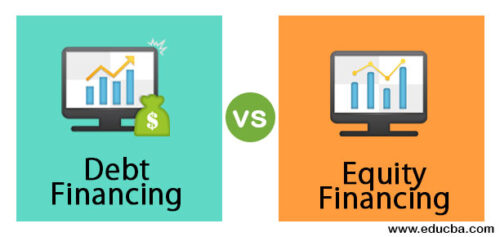EXPLORING FINANCIAL CAPITAL: DEBT VS. EQUITY
Introduction
In the world of finance, businesses often require additional capital to fund their operations, expand their reach, or invest in new projects. When seeking capital, two primary options are available: debt and equity. Debt involves borrowing funds from external sources, while equity involves selling ownership shares in the company. Each option has its advantages and considerations, and understanding the differences between debt and equity is crucial for businesses making financial decisions. This article aims to explore the characteristics, benefits, and potential drawbacks of debt and equity as sources of financial capital.
Debt Capital
Debt capital refers to borrowed funds that must be repaid over a specific period, usually with interest. Businesses can obtain debt capital from various sources, such as commercial banks, private lenders, or issuing corporate bonds. The key features of debt capital are as follows:
- Repayment Obligation: When a business borrows debt capital, it incurs a legal obligation to repay the principal amount along with interest within a specified timeframe. The repayment structure typically involves regular installments, providing a clear timeline for repayment.
- Fixed Cost: The interest on debt capital represents a fixed cost, which the business must pay regardless of its financial performance. This fixed obligation can be beneficial during periods of profitability but can also be burdensome during economic downturns or when facing financial difficulties.
- Creditor’s Influence: Debt capital providers, such as banks or bondholders, do not gain ownership rights in the business. However, they do have a legal claim on the business’s assets and may exercise influence over financial decisions, especially in the case of default or non-payment.
Benefits of Debt Capital
- Maintaining Ownership Control: By opting for debt capital, businesses can retain complete ownership control. Lenders do not acquire any ownership stake in the company, allowing management to make decisions independently.
- Tax Deductibility: In many jurisdictions, the interest paid on debt capital is tax-deductible. This deductibility can result in reduced taxable income, providing a potential advantage over equity financing.
- Fixed Repayment Schedule: The structured repayment schedule of debt allows businesses to plan their cash flows more effectively. Knowing the fixed payment amounts and timelines helps in financial forecasting and budgeting.
Drawbacks of Debt Capital
- Financial Risk: Borrowing debt capital increases the financial risk for a business, as failure to meet repayment obligations can lead to penalties, damaged credit ratings, and potential bankruptcy. Additionally, excessive debt levels may limit the company’s ability to secure additional financing in the future.
- Interest Payments: Regular interest payments can become a significant financial burden, especially during periods of economic downturn or low profitability. These payments can affect a company’s liquidity and restrict its ability to allocate funds towards other growth-oriented activities.
Equity Capital
Equity capital represents ownership shares in a business that are sold to investors in exchange for capital. Equity financing can come from various sources, such as individual investors, venture capitalists, or public stock offerings. Here are the key aspects of equity capital:
- Ownership Stake: Equity investors become partial owners of the business, entitling them to a share of the company’s profits and voting rights in major decision-making processes. The extent of ownership depends on the percentage of equity held.
- Variable Returns: Equity investors have the potential to earn returns through dividends and capital appreciation. However, the amount of returns is uncertain and tied to the company’s performance. In profitable periods, equity investors may receive higher returns, but during financial downturns, returns can decrease or become negative.
- Long-term Commitment: Equity investors typically have a long-term commitment to the business, as selling equity shares or exiting an investment often involves more complex processes compared to debt repayment.
Benefits of Equity Capital
- Risk Sharing: By selling equity, businesses can share financial risks with investors. If the company faces losses or experiences financial difficulties, equity investors bear a portion of the impact, reducing the burden on the business.
- Flexibility: Equity capital does not require fixed payments or interest obligations. This flexibility allows businesses to allocate available funds towards operations, growth initiatives, or innovation, rather than being restricted by fixed financial obligations.
Drawbacks of Equity Capital
- Dilution of Ownership: Selling equity shares diminishes the ownership stake of existing shareholders. As new investors acquire ownership, decision-making authority may be diluted, potentially impacting the original owners’ control over the company.
- Profit Sharing: Equity investors are entitled to a share of the company’s profits. This ongoing obligation to distribute profits can reduce the funds available for reinvestment or dividend payments to shareholders.
Conclusion
The choice between debt and equity as sources of financial capital depends on several factors, including the financial condition of the business, risk appetite, and long-term objectives. Debt capital offers structured repayments and allows businesses to maintain ownership control, but it comes with the risk of financial obligations and potential creditor influence. On the other hand, equity capital provides risk-sharing, flexibility, and potential long-term investors, but it may dilute ownership control and require profit sharing.
It is crucial for businesses to carefully evaluate their financial situation, growth plans, and risk tolerance before deciding which capital structure aligns best with their objectives. Ultimately, a balanced mix of debt and equity financing may provide a well-rounded approach to capital acquisition, enabling businesses to pursue growth while managing financial obligations effectively.


